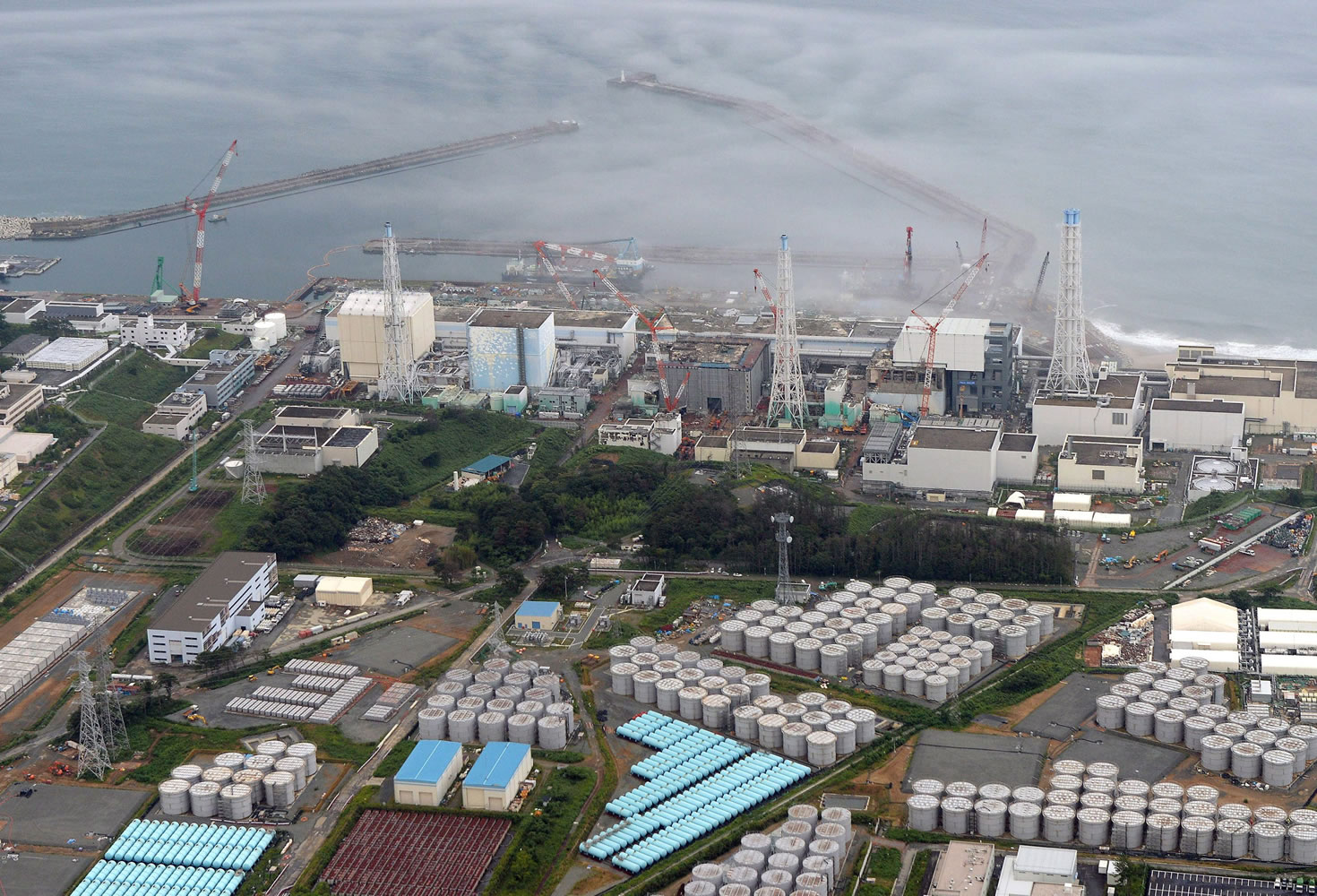TOKYO — Japan’s nuclear watchdog ratcheted up concern about more leaks of highly radioactive water from hundreds of storage tanks at the Fukushima atomic plant, after raising the severity ranking of a spill this week.
The leak of 300 tons of water from a storage tank on Aug. 19 was ranked as a “serious incident,” Japan’s Nuclear Regulation Authority said at a meeting Wednesday.
The possibility of leaks from other tanks “is the biggest concern,” said NRA Chairman Shunichi Tanaka at a press conference Wednesday. “This will need to be handled carefully on the assumption that one incident could bring another.”
At least one commissioner at the regulator questioned the accuracy of data being released by operator Tokyo Electric Power Co. and whether the incident had been fully reported. The leak, along with a separate spill of 300 tons of radioactive water a day into the Pacific Ocean, is raising doubts about the utility’s ability to handle the 40-year task to decommission the wrecked nuclear site.
Tepco is providing the regulator with information, company spokesman Yoshikazu Nagai said by phone, declining to comment further. The company’s shares fell as much as 15 percent in Tokyo, their biggest intraday slide since June 5.
Japan’s government has ordered an investigation into the safety of hundreds of other tanks storing contaminated water in Fukushima, the site of the world’s worst civil nuclear disaster since the Chernobyl reactor exploded in 1986.
There are 226 tanks of similar design to the leaking unit with the same 1,000-ton capacity at the site, said Tatsuya Shinkawa, director of the nuclear accident response office in the government’s Agency for Natural-Resources and Energy, which called for the probe.
Nuclear incidents and accidents are ranked by order of severity on the International Nuclear and Radiological Event Scale or INES, which has seven categories and was set up by the International Atomic Energy Agency.
On Aug. 19, Tokyo Electric Power Co. said about 300 metric tons of highly radioactive water had leaked from a storage tank and was ranked as category one, the lowest, on INES.
Japan’s NRA on Wednesday raised that to category three, or “serious incident.” The 2011 meltdown of the three reactors at Fukushima is in the highest severity category of seven on the INES scale, the same as Chernobyl.
“This INES evaluation is based on the 300-ton leak, but I really wonder if we can trust data provided by Tepco,” Toyoshi Fuketa, a commissioner at the NRA, said Wednesday at a meeting in Tokyo. “I really wonder if we should judge based on Tepco’s data.”
In two separate incidents this month, workers were exposed to radioactive releases at the plant.
Prime Minister Shinzo Abe has said that Tepco alone isn’t able to handle the clean-up, promising more government funds without detailing how they’d be used.
INES is a means to measure nuclear accidents in terms of their effects on health and the environment, according to the International Atomic Energy Agency. Each of its seven steps represents a tenfold increase in severity.
A seven rating means there has been a “major release of radioactive material with widespread health and environmental effects requiring implementation of planned and extended countermeasures,” according to the INES fact sheet.
Japan’s regulator raised the INES rating on the water leak based on radiation levels reported Tuesday by the utility and on an evaluation of measures at the plant to prevent such incidents. The IAEA will be the final arbiter of where the leak will sit on the severity scale.



